
We reported on the late stages of the development of the Triumph electric motorcycle a few months ago. Earlier today, Triumph and its development partners displayed the final prototype and its performance numbers, claiming they had exceeded their goals for the machine.
This is a sport motorcycle, and the performance results are measured against that category of electric bike. The results are pretty impressive when it comes to power, weight, acceleration and charging time (cut to 20 minutes for an 80% charge). The project also claims a class-leading range of 100 miles, although, as we know, range is heavily dependent on throttle usage and speed.
Although this is a “finished prototype”, Triumph is not saying anything about a production version for customers at this point.
We are actually publishing the press release from one of Triumph’s partners in the project, Williams Advanced Engineering, because we like its brevity. The press release is followed by a video from Triumph. Here is the press release:
Final prototype Triumph TE-1 project testing results revealed
- Official completion of the TE-1 electric development project announced with the release of the final prototype test results exceeding project objectives
- WAE battery technology has enabled performance targets to be exceeded together with charging targets: 161km/100mile range, 130kW (177PS/175bhp) peak power 3.6 seconds 0-60 mph (6.2 seconds 1-100 mph), 220 kg with class leading power-to-weight ratio
- 20 minutes charge time (0-80%)
Today marks the official completion of the TE-1 electric development project, with the release of the final prototype test results that exceed the project objectives and demonstrate the incredible success of this unique collaboration.
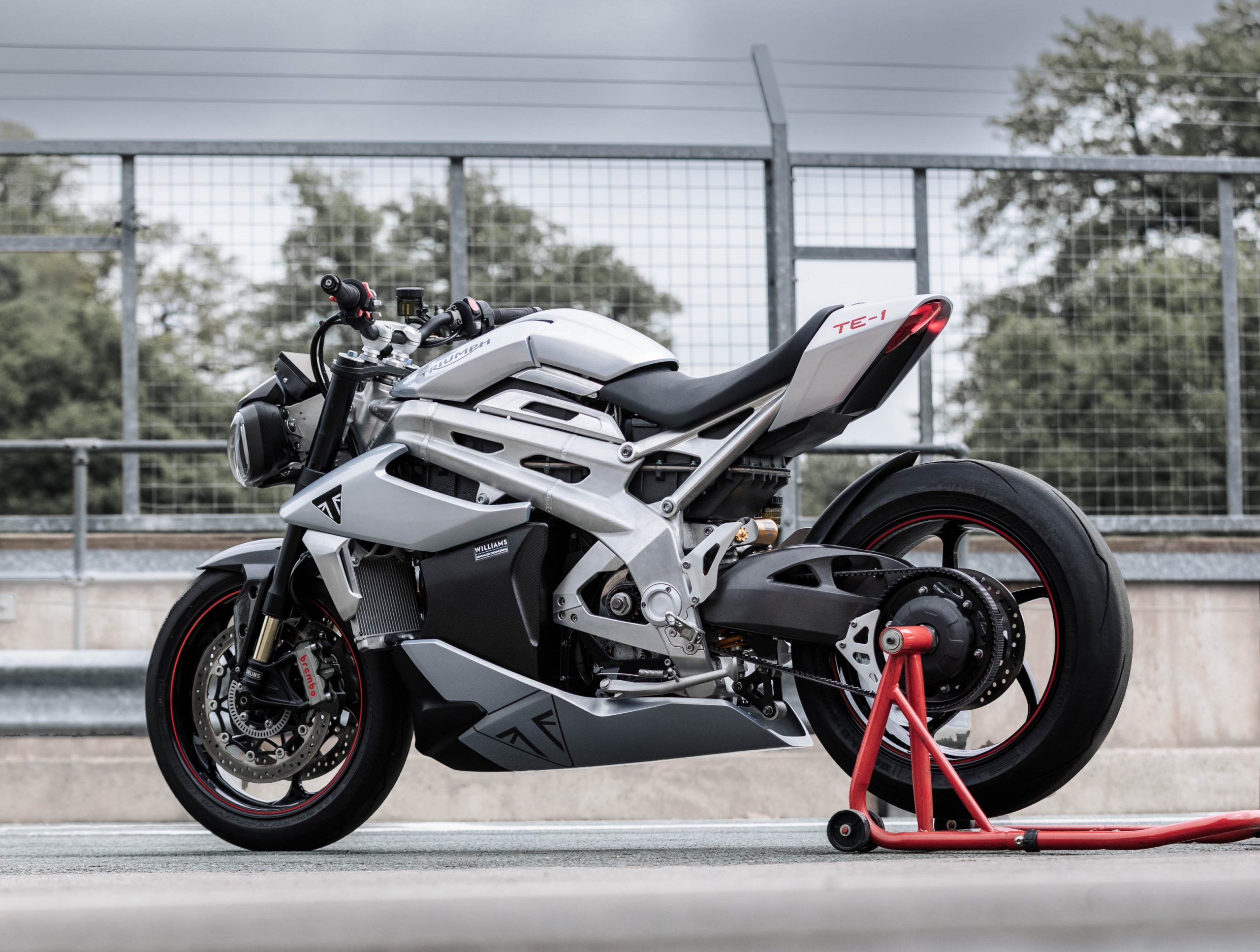
The TE-1 significantly exceeds the real-world range of the equivalent electric motorcycles available today with a category-leading 161km / 100mile range, based on live testing and official projections. 130 kW (177PS / 175bhp) peak power delivers an incredible standard of acceleration, achieving 3.6 seconds 0-60mph, and an outstanding 6.2 seconds 0-100mph combined with a game-changing 20-minute charge time (0-80%), faster than today’s equivalent electric motorcycles. At 220kg, the bike is up to 25% lighter than comparable electric motorcycles supporting a class-leading power-to-weight ratio.
The unique collaboration between Triumph Motorcycles, Williams Advanced Engineering, Integral Powertrain Ltd, and WMG, University of Warwick, funded by the Office for Zero Emission Vehicles through Innovate UK, was set up to create ground-breaking developments in specialist electric motorcycle engineering and innovative integrated technology design. The extensive live testing programme, which involved numerous assessments of the bike’s performance on the rolling road, as well as on track, provided vital direction into the final set-up and calibration of the TE-1 prototype demonstrator, which has now delivered on all of its targets and objectives.

With phase 4 officially completed, the live testing phase of the Triumph TE-1 project has seen the prototype demonstrator exceed expectations and achieve some incredible outcomes, delivering on all project objectives of accelerating electric motorcycle development and innovation, setting new standards for the sector overall, including final battery and range performance. The expertise and capabilities developed throughout the project now pave the way for the exciting electric future to come from Triumph Motorcycles.
Category-leading 161km / 100mile range
Exceeding the real-world range of the equivalent electric motorcycles available today, the Triumph TE-1 prototype has achieved all project targets with regards to the energy capacity of the Williams TE-1 project developed battery, with an incredible 161km / 100mile range, based on official testing and projections.
Regenerative braking has been successfully implemented for TE-1, with scope for further optimisation, as well as greater efficiencies in the motor generator unit and transmission, which could improve the range further for the future of Triumph electric motorcycles.
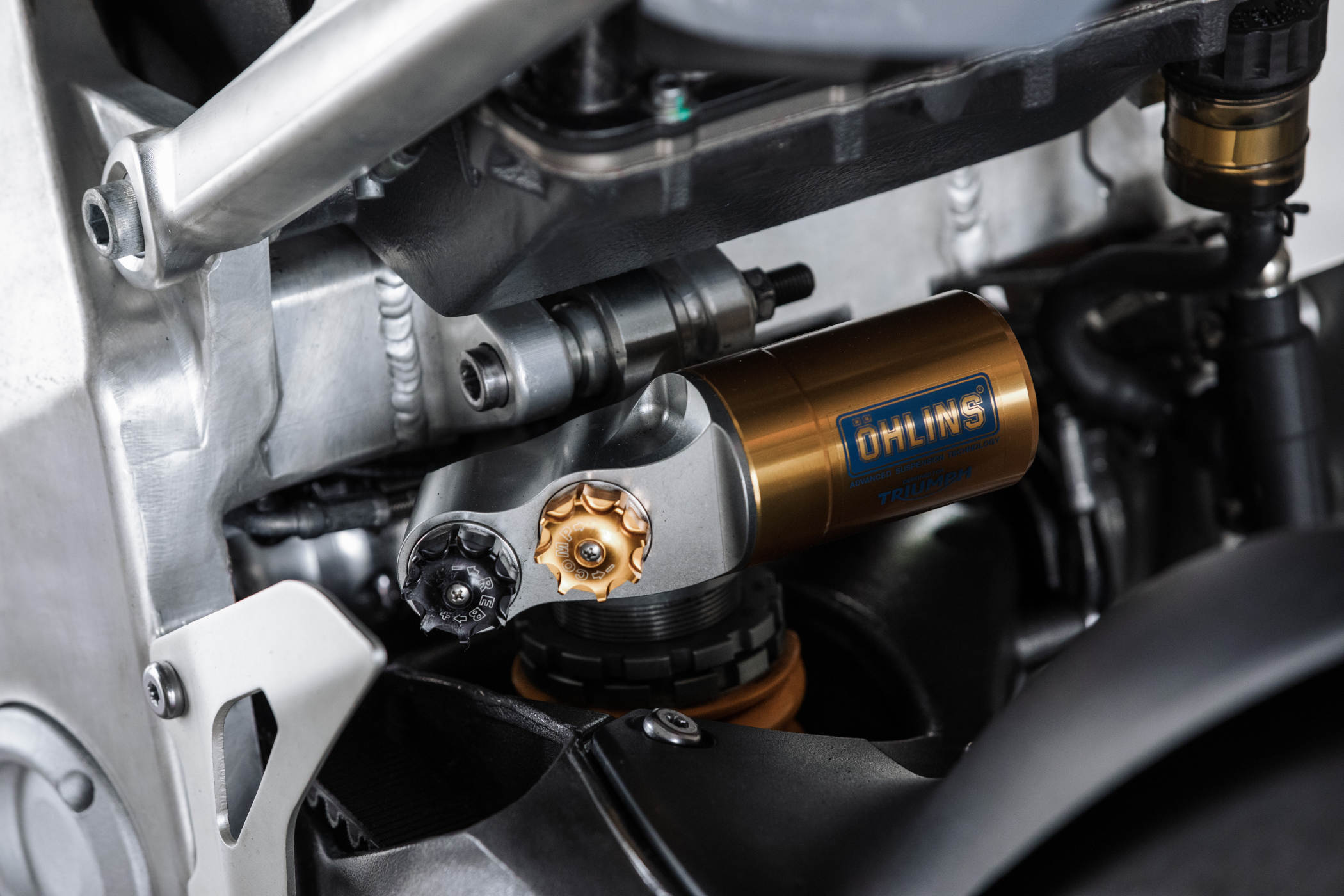
Game-changing 20-minute charge time
Advances in battery and charging technologies that have been developed as part of the Triumph TE-1 project, in collaboration with Williams Advanced Engineering (WAE), have resulted in a game-changing 20-minute charge time (0-80%), successfully delivering against the ambitious targets laid out by Innovate UK, the government’s research and innovation agency that supports business led R&D funding and UK business growth.
“WAE are delighted to have been involved in this exciting programme to deliver the TE-1 prototype. Since its conception in 2018, all the partners have worked with collaboration, innovation and passion to bring the boundary breaking prototype to life. It is pleasing to hear positive rider comments which confirms that the dynamics of the bike are aligned with Triumph’s DNA. This has been underpinned by the class-leading Battery and Control System that WAE has produced within a lightweight and integrated package. This core WAE technology has allowed us to exceed performance and charging targets for the battery which we look forward to seeing in future powertrains.” Dyrr Ardash, Head of Strategic Partnerships, Williams Advanced Engineering.
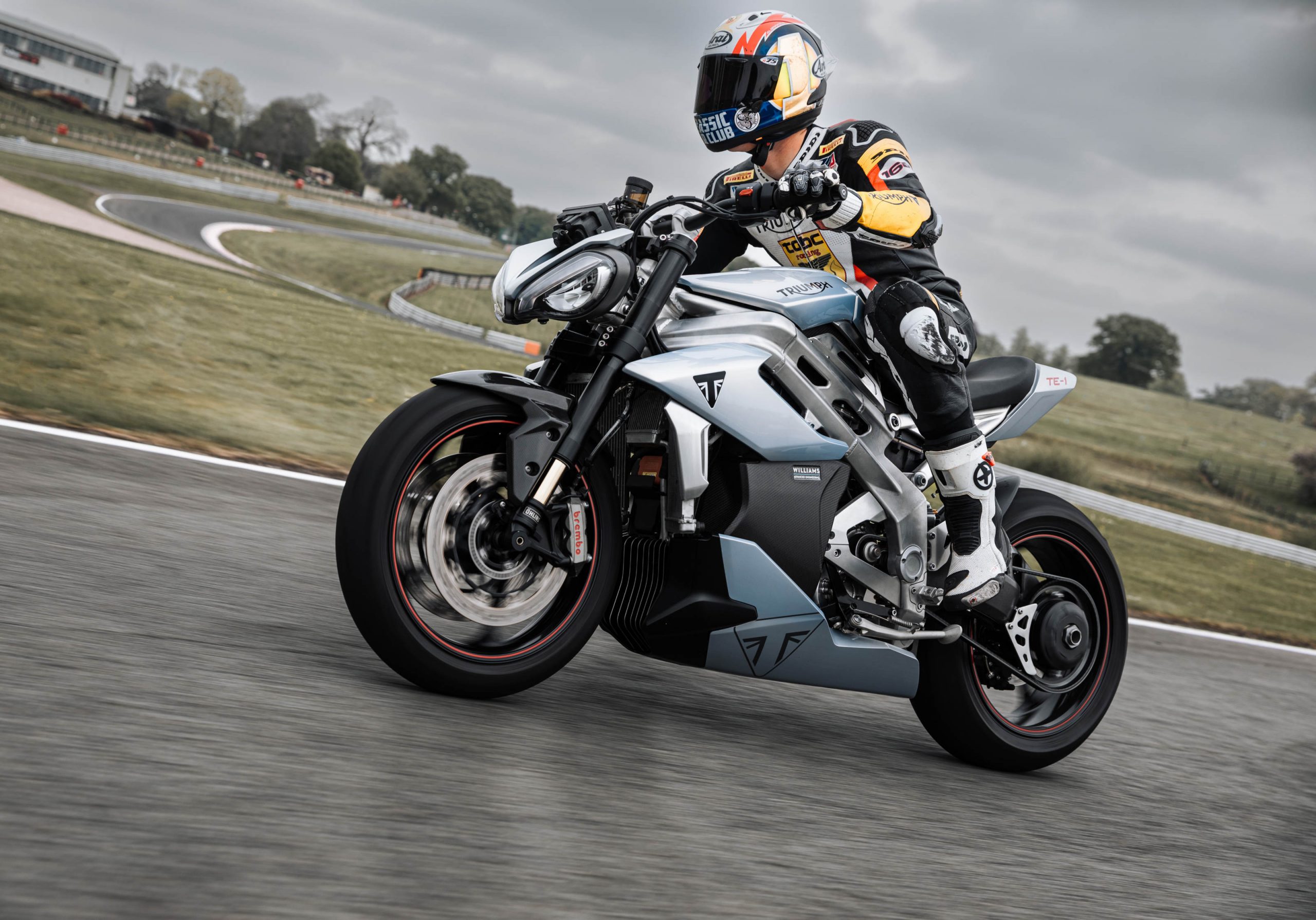
“We are incredibly proud to be able to share such positive outcomes from the completion of Project Triumph TE-1, where the prototype demonstrator has exceeded many of our initial targets and expectations. Everyone on the team is thrilled with the results we have achieved with our partners, and how the outcomes of the project will feed into the electric future to come from Triumph.” Nick Bloor, CEO, Triumph Motorcycles.



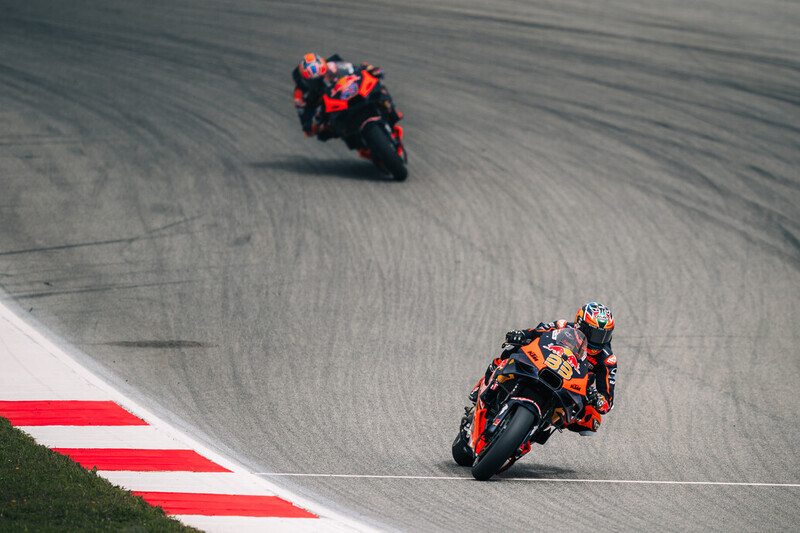
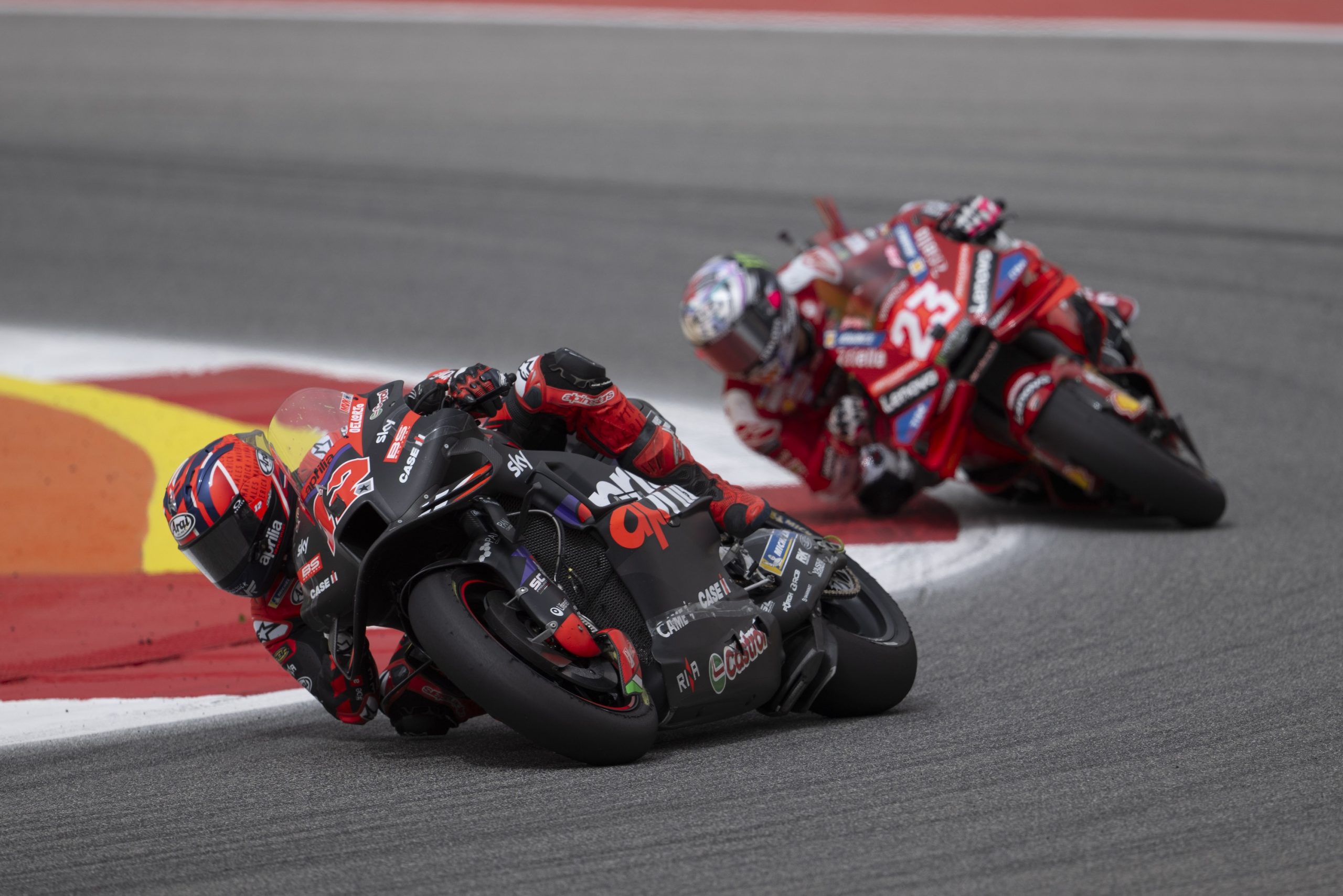

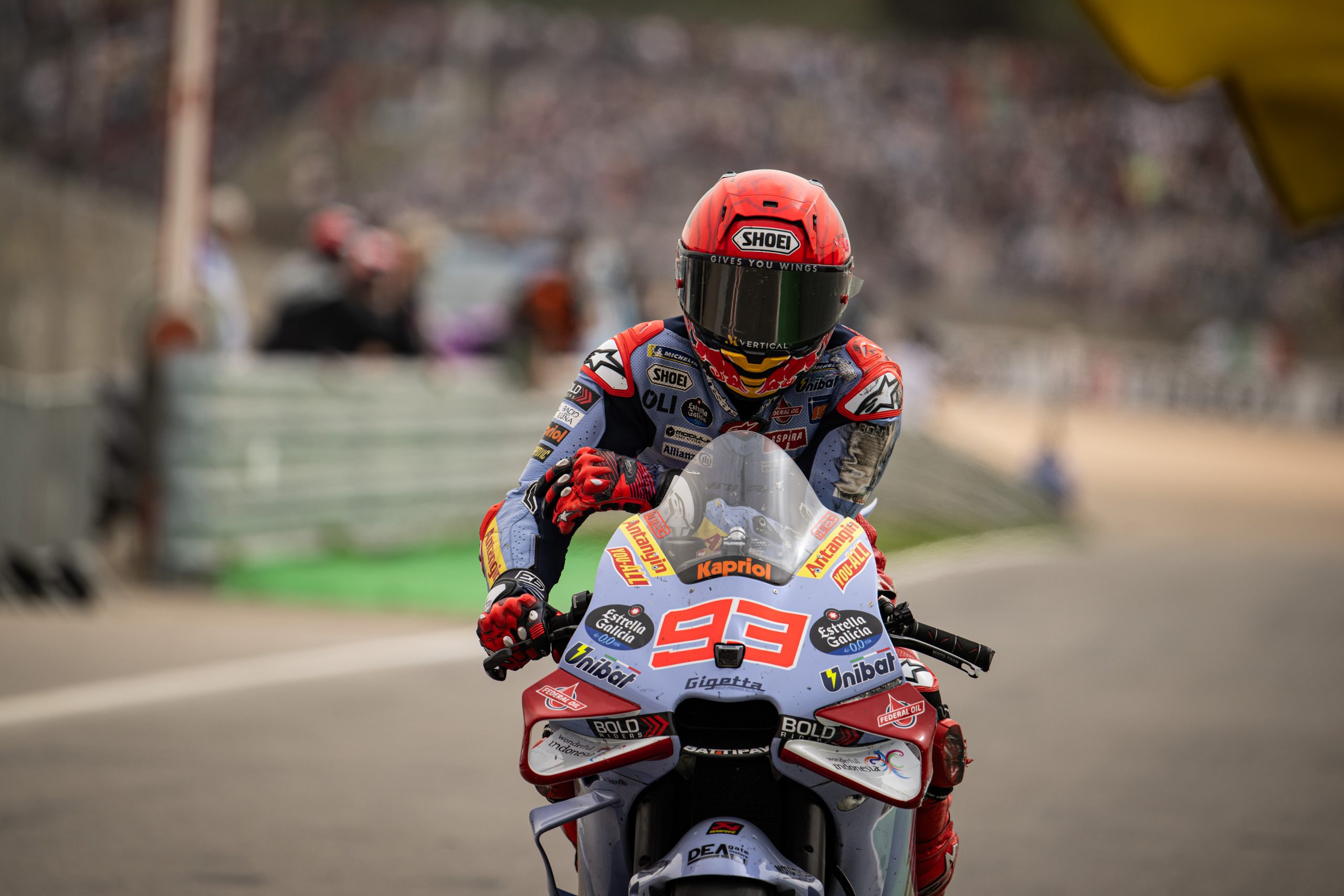
Question for everyone.
Are you happy with the flat, thin seats? I know that I’m an old fart that rides mostly on the slabs so I’m looking for a comfortable ride rather than max lean angle but with all the noise made back in the day about the Suzuki GS – G model comfortable seating, I would think that I am not the only person that would appreciate a 4 hour seat.
The Internal Combustion Engine is becoming more and more refined, efficient, and powerful but ultimately it will become a historical footnote and scientific curiosity only found in enthusiast’s garages and museums displayed alongside steam engines.
Electric and battery tech, though in its infancy now, will carry transportation into the future – at least for a while until the next thing comes along.
No. No, No, No. Just – No!
Most of the arguments regarding to transmish or not, on an electric make sense to me. Therefore I’m out, cause everybody can’t be right, or wrong. My logic says the only reason to transmish is to improve the range before the lights go out, so I will be satisfied with smooth silent fun locally, and wha hoo giddy up on fuel fed motorcycles for the all day loop. Suggest we all need one of each to lead a fulfilling and satisfied life.
This bike definitely needs a multi-ratio transmission. It sounds like they geared it for a higher top speed at the expense of acceleration. 3.3 seconds to 60 mph was what my 690 single is listed as and that’s before I stripped 12 pounds off it and lowered the gearing ~7%. This bike makes a whole 100 horsepower more. Seems like a waste if you can’t even outrun a thumper.
Acceleration is limited by traction and wheelie resistance. There are many bikes on the market that claim mid 2’s for 0-60 but very few riders can ride them well enough to do it.
If a 330 lb bike based on a supermoto can accelerate to 60 in 3.3 seconds or better without doing a power wheelie or breaking traction, surely a 500 lb bike with sport bike geometry would have even less trouble.
It probably can do better. I don’t know why they have “chosen” the 0-60 amount of acceleration they have (possibly current limited for range preservation). It’s semantics, really. A quick search shows that besides the 1290 Duke R, all of the KTM’s from the 690’s through the 1290 adventure do a theoretical 0-60 in 3-ish seconds. I say theoretical because as mentioned before, the vast majority of riders couldn’t achieve those times regardless of what their bike is capable of.
“with sport bike geometry” – this is not necessarily a good thing in straight line acceleration so why mention it in this context?, especially when Dave is stating few riders can achieve claimed acceleration times, mainly due to lack of control surrounding seat height, shorter wheelbase leading to wheelies, etc.
I was comparing the lower CG of a sport bike to that of a supermoto or my Duke. I have no problems rocketing up to 60 in around 3 seconds. Bikes with wheelie and traction control with “launch assist” are also becoming the norm now.
Dirck, you’re right, lithium mining is a mess environmentally, and who holds 90% of known deposits? China. So should we convert all vehicles to lithium battery power, only to have them hold the keys to future production?
A recent report I read showed that the carbon footprint of an electric car was still 66% of that of an internal combustion equivalent car – this includes manufacturing and use of the vehicle. So, like others are saying, is this really the green car/bike that everyone thinks it is? It’s clearly not all about the consumption of gasoline – if gas accounts for only 34% of the carbon footprint.
That being said, these companies are obviously throwing huge effort and cash into this electric vehicle R&D (tax benefits thanks to governments giving tax dollars (our money) to do such research?). So they either think it’s the future, or their getting big financial incentive from the gov’t to do it.
China doesn’t have 80z of the world’s lithium, they’re #6 after Bolivia, Argentina, Chile (currently the biggest producer), the US, and Australia.
@ 66% (per that study) an ev is a 34% improvement – today. This will improve. ICE has had 100 years and we’ve gotten stagnant technology advances. The Auto industry has always gotten billions of tax dollars. We’ve even bailed them out when they were flatly defeated in the free market by foreign companies. Time to invest in something with the potential to win for once.
Mongolia also has significant amount of lithium.
The charts shown on this page https://www.visualcapitalist.com/sp/charted-lithium-production-by-country-1995-2020/ indicate that Australia and Chile have been the largest producers between 1995 and 2020.
Seems we are being forced down the path leading to nowhere..I dont think the world is ready for E motorcycles cars trucks or whatever.Call me an old bastard I dont care..Who am I going to get mad at when I am feeling road rage and there sits a truck / car with no freaking driver to shout at?…Outright power to the ground admittently is very impressive but the driving experience is totally absent imho. I will not buy into this new age until there is no more gasoline to be had at the pump..by then I will most likely be confined to a wheelchair….
I have a small electric motorcycle. It’s fun to ride it for a battery’s worth of kicks. It weighs half as much as my dirt bike and I can go at least as fast on it as the slowest guy that I am riding with.
But if I ride it too hard I’m likely to pop a tire and I have had to push the thing out of the woods several times because range is unpredictable. Sand and hills and especially sandy hills are range killers. The bike is little more that a toy. I do a short loop on the electric and then I ride a two stroke for the rest of the day. I bought supermoto wheels for it and brought it to the supermoto track. The kids on their little bikes totally roost the thing on the pavement. I’ve got game for them in the dirt section because I’ve been riding dirt bikes for over fifty years. But l would have to get a higher voltage battery and a new motor controller to really be able to compete in a tiddler class.
Me buy an electric bike as a front line street bike? Well, battery technology would have to come a very long way first. I ride with a bunch of BMW boxer guys with good fuel economy and huge gas tanks. I’m a little enbarased when I signal for a gas stop at 150 miles. Those only take about five minutes and gas stations are well distributed. I’ll be chasing Nicky Haden, on a two stroke naturally, on the way to a Jimi Hendrix concert before I have an electric front line street bike. Though I have considered an electric car, truck really, for local use just because I make so many short trips to go mountain biking that I go through exhaust systems. Some kind of electric thing would be perfect for mountain bike runs. Driving a one ton diesel crew cab long box 4X4 to haul one mountain bike three miles is a little ridiculous.
Time yourself, you’ll be surprised. I pulled into a gas station the other day and counted alligators until I filled 3-1/2 gallons (~200 miles) in my bike. I was pulling away just at around 60 alligators. 5 minutes, you could fill a truck.
Imagine what that extra 6 miles of round trip pedaling would do to your fitness, which leads to better mtn biking and motorcycling
Wasn’t it the Brammo Empulse that had a gearbox? I don’t really understand why more electrics (two or four wheels) don’t use at least a couple of gear ranges. I get that electric motors don’t have a torque “curve” — it’s a flat plateau throughout the “rev range.” But that is not the only reason ICE-powered vehicles have different gears. A CVT definitely wouldn’t make sense for an electric, but different gears covering different revs:roadspeed ranges confer mechanical advantage as well. And there may be efficiency gains as well (even with that flat torque). I understand a gearbox is complex and that part of the allure is not having to shift, but it also seems like some people like to shift and that the mechanical advantage of multiple gears could be worth it in some applications. Just wondering.
Agree on the gearbox issue.
There is a strong desire to get away from shifting transmissions. They are a major impediment in motorcycle adoption. Only about 1.5% of cars sold in the us have manual transmissions. The rev range and timing range of an electric motor is such that as long as the primary drive is appropriate I don’t know if there’s much efficiency to be gained with more ratios.
Hmm. I guess I get the getting away from shifting thing. I drive a 2015 V6 Automatic Mustang, but I do all the shifting myself. I put it in “S” and before I even start moving I’ve hit the left paddle to activate manual mode. In this mode it will never upshift, you can bounce it off the rev limiter, though it will downshift so as to not bog the engine. But I actuate 100% of the shifts myself, up and down. Last time it shifted for me was probably during the Obama Administration. It was the same thing for my previous car, an Automatic Scion FR-S. So, there’s no clutch to worry about, but I do all the decision-making as far as gear vs. engine speed vs. road speed. I wonder if an electric motor’s gearbox could be similar. I think the Goldwing and maybe the FJR1300 (if they still make it) had something similar as optional.
As far as whether it would be beneficial vs. the extra weight, engineering, cost, complexity, and parasitic losses, there seem to be varying opinions here. I can’t quite wrap my head around why, ignoring all the factors I just listed, an electric vehicle wouldn’t be more efficient, and/or higher performance, and/or more flexible in going from a single gear to two potential gears, and possibly more. But all those factors may outweigh the benefit in the case of the brushless DC motor.
The opportunity is removal of select-able ratios all together. These really only exist because of the narrow power band/output speed of ICE engines. If shifting were replaced with perfect resolution/response between the throttle control and the tires, I don’t think anyone would miss gear ratios.
Electric motors also have a “narrow power band”. It’s just that they can tolerate being bogged down. The speed range of electric motors are still such that a manufacturer needs to decide between optimal acceleration or top speed if they wish to dispense with the cost of a multi-ratio transmission. Every manual transmission equipped ICE vehicle I’ve owned or driven/ridden has had perfect resolution / response between the throttle control and the tires. It’s not until I rent or borrow a car with an automatic or CVT that I find the glaring disconnect between my control inputs and the response if the vehicle. Instant torque and response were a typical given expectation long before electric vehicles came on the market.
That is your perception but it’s not reality. You do not have perfect resolution from the pedal to the tires because the engine’s output is more varialbe with speed and the transmission/drive line is also diluting the output of the engine. There is far more opportunity for control/accuracy with electric power.
Consider what is has become possible with 4-rotor electric drone flight, just by modulating the speeds of the motors. Imagine what is possible if those 4 simple propellers were a car’s tires.
My perception is exactly what I’m after. I’ve driven all sorts of vehicles and have been involved with the design of electric vehicles and their drivetrains. I can honestly say that I have perceived more engagement and control and enjoyment in ICE vehicles than I have in any EV. I’ve gotten way more “feel” and pleasure out of a Lotus Elise or 914 or MR2 Spider or VW Bug or my old 74 Ramcharger than any EV I’ve come across.
I must be getting old. My first 5 cars were manual shift (one was 3 on the tree!) and don’t see shifting as a drawback. All my bikes have been/are shifters. I just think it’s more fun to shift and will continue until I’m forced to adapt. I understand why EV’s dispense with a transmission as max torque is available off the line. That’s fine, but there is something therapeutic about shifting. Am I crazy? Probably, but I’m not alone. I’ve got a couple decades of riding ahead of me and will continue to go ICE and shift my own until I’m forced to join the latest fad that will “save the planet”.
E vehicles dont have the defect of ICE, in that it doesnt need a transmission. Electric have max torque at zero rpm, and everywhere else. your suggestion there would be an advantage, isn’t based in fact. imho
Interesting.
So two EV’s, each with a different gear ratio, going the same speed for the same distance use the same amount of power?
I’ve ridden a number of them now and disagree. They could definitely benefit from a few gear ratios. A Hayabusa doesn’t need a transmission either. A single ratio and a clutch would be just fine. But it’s better with six.
This is a total fallacy. I will gladly take 50 lb-ft at 1,700 rpm over 100 lb-ft at 1 rpm because that 50 lb-ft can provide 842 times more acceleration than the 100 lb-ft can. Of course, no electric vehicle is geared to run at zero or 1 rpm so the argument doesn’t make any sense.
Actually, brushless DC motors do not have a flat torque curve. ICE have a more flat torque curve than a DC motor (brushless or otherwise).
The Torque curve for a DC motor is essentially a straight line, with maximum torque at the point of zero speed, and zero torque at the maximum speed of the engine (which is a function of how how the motor is wound). The motor is sized such that it delivers maximum power to (torque x speed) to achieve maximum vehicle speed (tire resistance, friction, aero loading, etc.) Maximum motor power (and power is what dictates speed) is achieved at 1/2 of the motor’s maximum speed. The motor spins way slower at maximum vehicle speed than it does at maximum motor speed.
Because of this linear (down-sloping) curve, the gearbox really doesn’t do much for you – if you gear it down, it has to spin faster, reducing available torque. If you gear it up, it slows the motor down, but increases torque, but the power is still below maximum available. The transmission doesn’t buy you much, especially for the added cost.
Interesting I will have to do some research to understand this more. Thanks.
But you’ll lost horsepower in gearbox.
But you multiply torque in a gearbox.
Are you accelerating all the time on first gear? And this bike makes 0-6 in 3 second. Upper gears are close to 1:1.
Some bikes do, yes. My Duke needs second gear to get to 60 mph in <3.3 seconds though. First gear is a 14.63 overall reduction and second is 10.24. A Zero SR has a 4.4 reduction, only, always. That means my 55 lb-ft is 804 lb-ft at the rear tire in first (up to ~40mph) and then 563 lb-ft up to 60mph. The 106 lb-ft that the Zero SR makes comes out to 466 at the rear tire, only, always. It’s not until I shift into 3rd gear that the electric Zero has more torque than the Duke. It’s too bad that the Zero weighs 25% more so it won’t even begin to out-accelerate the Duke until I shift into 5th gear somewhere around 100…
Thanks. I used to drive Gilera scooter.
Very comfortable.
Aprilia Falco meets early Suzuki SV, meets pushing a heavy bike to the charging station.
I agree with others, I think they’ve done a good job of making this look like a real motorcycle, and the charging time is impressive. Still, I’m bothered by the time and energy being put into battery powered vehicles. That’s not a political stance, I’ve even considered buying an electric car for around town driving myself. Still, we’re going to spend trillions on infrastructure only to realize in a few years that we went down the wrong path. Many people can’t even afford a used electric car, and by the time the original owner gets rid of it, it’s probably going to be nearing time to replace the batteries. A quick Google search shows the average cost to replace a Tesla model 3 battery at around $15,800 US. How is the average person going to be able to afford a used car and turn around in a couple of years and replace a battery? In my opinion, we should be spending this money developing infrastructure for hydrogen powered vehicles. Toyota has had hydrogen powered cars in California for a number of years, but the infrastructure is lacking. I’m all for clean air and a healthy environment. I just think we’re headed down the wrong path to get there.
Lithium mining is a mess. Battery disposal is a nightmare. Are we trading one environmental problem for another? We need an MD article to sort it all out.
I agree completely. There are currently around 2.5 million e cars registered in the US, compared to over 270 million cars in the US in total. As more cars become e cars, that’s a lot of toxic materials to dispose of. Unfortunately, once something gets debated along political lines, people tend to choose sides and not look at things as objectively as perhaps they should.
I would personally love to read an MD article on the subject, especially since I have high confidence that you will strive to present information in a format free from politically-derived preconceptions or motivations.
Part of the problem many of us have, even if we have a reasonable grasp of technical issues, is that it’s getting harder and harder to find experts we can truly “trust” to deliver said info in an unbiased manner. I mean, it’s over two years since the onset of Covid, and we’re still arguing about the effectiveness of face masks, let alone the origin of the virus, partially because much of the information we were presented with early on was simply wrong, whether intentionally or inadvertently. Many similar controversies exist within the context of causes, effects, and proposed solutions concerning global warming. Again, I would love to hear MD’s take to the extent you’re willing to address it.
Where did you read that, Dirck? Most lithium is mined in a salt brine evaporation process. Mining and using oil is far worse. Have a look at the open pit Alberta tar sands mines. That land will never be good for anything again and it’s super nasty and toxic.
The materials in a battery are not exhausted in use. They’re valuable and recyclable. As volumes grow, this will become a lucrative cash business.
Dave, you would benefit from becoming informed. I’m not going to educate you on this forum, but the mining of the oil sands is really a massive environmental cleanup that the oil companies have found profitable. The pre- condition is oil oozing out of the ground into waterways and damaging everything in the area and downstream. The post- condition is pristine. Let me know when you would like to come up for a tour.
I have. I am aware that the government requires oil sands operations to reclaim the lands they work but I am not aware of any successful projects that have come to completion. None of that excuses the pollution and mess that is involved in the extraction processes. The government’s own page on the subject is a transparent whitewash.
What’s with the saggy boob headlight assy? Not as bad as what the Z1000 had but still bad. And the exposed instrument? At least put the S3 flyscreen on it. I like the rest of the styling though. Modernly fitting for an e-bike.
This has 175 HP and a 3.6 sec 0-60 time but I can buy a 40 year old V65 Magna with far less power that does 0-60 in 2.2 sec. Not very impressive IMO.
Range will always be a sticking point. But why not switch to a single phase mode for less power per rpm and increase the range for steady hwy miles? Put it back in 3 phase for riding like a dick.
20 minute charge time to 80% at what level? 2? Certainly not 1.
You’re correct but not quite. Cycle World tested the V65 Magna at 3.3 seconds, 0-60 mph. That also happens to be the same 0-60 time as my 690 single. It’s likely they geared it for a higher top speed at the expense of acceleration. If it had a two-speed transmission, they could have increased acceleration and kept a high top speed.
My 2002 Suzuki Bandit did 3.5 seconds to 60 mph and can be purchased all day long with low mileage for $2500. That’s the beauty of motorcycling, you can buy a lot of performance for pennies on the dollar. No need to spend $20k on the latest and greatest only to be beaten by an 20 year old clunker bike ridden by someone that knows what they’re doing.
The more I see the way electric street bikes are being developed the longer I think it is going to take for me to take them seriously.
But I suppose that right now the power density of batteries rules out making sensible motorcycles for public roads. So you get bikes like this one. Open class power, don’t even think about it range, and don’t ask weight. Should batteries ever have at least 4X the current power density, then perhaps the manufacturers could start making more attractive overall packages.
At that time, if I’m still around, I’d be looking for a new player. The current crop of street bike manufacturers have been navel gazing for so long that I’m quite certain that they will never make a compelling package. All of them have been making ICE bikes for decades now and none of them can seem to produce anything that I am even remotely interested in. Their best bikes are all budget bikes. And those of course are bristling with ballast and substandard parts.
I have to get a T-shirt with “I’m with Mick” written on it…
I think that they did a great job with the cosmetics.
A trend that I’m seeing with electric motorcycles is that, since there is no big ICE to make the center of attention, instead they have made the frame the interesting center of attention.
In this case the frame loosely reminds me of a Suzuki SV650/100 from around 2003-8.
Good styling is certainly in the eye of the beholder (as is beauty), but I personally like it far better than any other electric motorcycles I’ve seen, including HD’s LiveWire or Zero. In fact, I think it looks great regardless of propulsion method, and as a long-time Triumph owner (Daytona T595/955i) that’s saying a lot. I just wish the range was better than a meager 100 miles per charge; even Zero has a combined range of 150 miles. Will be interesting to see where they price it, which will make or break this bike. If I were Triumph I’d price it as a loss-leader to build market share and mind share. Hope the production model stays 95% true to this wicked prototype.
Might as well bolt on full coverage, easy to remove panels to each side to make it look aerodynamic. As it is it is too busy with many small covers and bits of odd shaped pieces slapped on willy-nilly. Maybe an old Italian designer can help with a more appealing look?
Exactly my thinking.
I actually like the design, except for the non-starter tail section. But for now the electric bikes are urban. I hate cities, so count me out.
I’d like to think that viable electric street bikes are on the horizon. But how long has fusion power been twenty years out?
Solid state batteries will take care of range. Too bad that is still a few years away.
Interesting the visuals are much like the Suzuki B King, and that’s a good thing. A 100 mile range with 20 minutes 0-80% probably mean you can stop for coffee every 75 miles, so although challenging a road trip is possible on 200-300 miles per day. Landing a price point that will draw buyers is the hardest task. Good job Triumph.
Good luck finding a level 3 fast charger anywhere near the fun places to ride. Most good roads are 25-50+ miles out of town before they even start.
I am gonna have to go with the scrap pile melted together visuals view. They could ask Royal Enfield how to make a good looking bike. Or search archives.
Otherwise it is a nice step forward in its way.
20 minute charge time is pretty good if you are close to a charging station when you need a charge.
Has AAA figured out a way to jump one of these electric vehicles when you coast to the side of the road outta juice?
I actually saw one charging a Tesla with a big generator in a remote area of Southern Utah.
Lol no kidding. That’s interesting.
Yep, no kidding. The generator was mounted to a large flatbed truck (looked like a roadside service rig for disabled semis.)
Just read an article that AAA does indeed have mobile charging stations in certain markets, and that they have made thousands of emergency calls ( which pales in comparison to the 1/2 million calls they made for cars running out of gas)
Jolly well the team is pleased with having met its performance objectives. Just two flies in the bowl of chili. They forgot range and consumer visual appeal. Most would trade absolute get up and go for a 200 mile range and something smooth, instead of a broke back pile of scrap whatever, dressed in a boob under bra cross eyed front end.
Well, it gets an A+ for visual appeal to me. The 100 mile range is a bit vague. I guess we have to assume it is city cycle for now, which makes that none too impressive.
You can bet that the stated range is optimistic under the best of conditions. It’s always been that way. These bikes need to wait for battery tech to develop (20 years?) before they are a viable alternative to what is available with ICE.